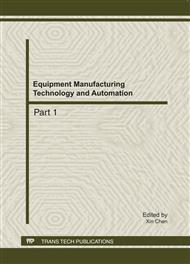p.2030
p.2037
p.2041
p.2047
p.2051
p.2056
p.2063
p.2069
p.2073
Electronic Structures and Thermoelectric Properties of NaCo2O4 Thermoelectric Material
Abstract:
The electronic structures of thermoelectric material NaCo2O4 were studied by the first-principles calculations with plane-wave pseudopotential method and generalized approximation (GGA) based on density functional theory (DFT). On the basis of calculation for electronic structures, thermoelectric properties of NaCo2O4 were also investigated in this paper. The reasons for large thermoelectric potential are large effective mass of holes at the top of valence band and 6μB net spin magnetic moment. While high electrical conductivity should be attributed to small effective mass of electrons at the bottom of conduction band, large carrier concentration near the Fermi level and narrowed energy gap. In addition, covalent bond between Co atom and O atom promotes carrier mobility and thus benefits to electrical conductivity. Na1 and Na2 have different effects on the NaCo2O4. Na1 provides local state electrons and yet Na2 provides itinerant-electrons which play important role to strongly correlated system.
Info:
Periodical:
Pages:
2051-2055
Citation:
Online since:
August 2011
Authors:
Price:
Сopyright:
© 2011 Trans Tech Publications Ltd. All Rights Reserved
Share:
Citation:


